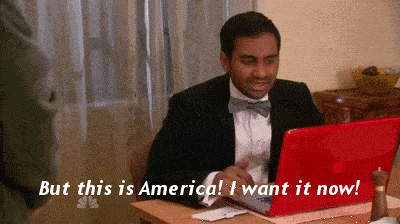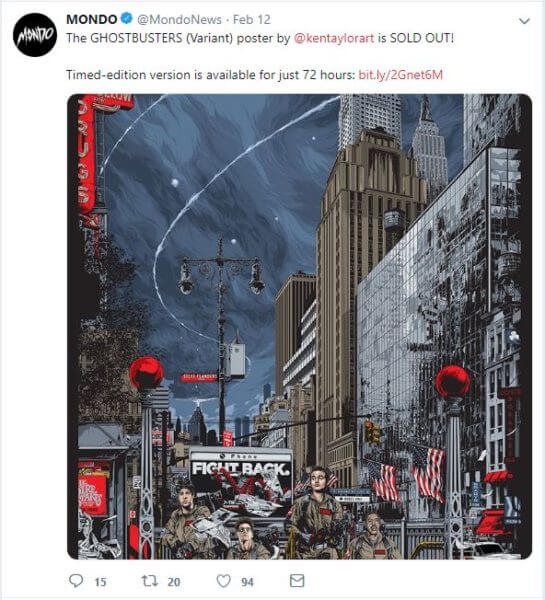Creating a sense of exclusivity and limited-time offers for high-quality items can be a powerful way to sell your products or services. But how you do it matters.
These days, everything seems to be about ease, convenience and availability. With a few clicks, you can get almost anything (groceries, clothes, transportation…you name it!) sent to your home.
If people can’t get what from one business, another option is just a few more clicks away – so why wait?

In this climate, it seems like scarcity marketing should be a thing of the past. However, this couldn’t be further from the truth. As it turns out, having so much surplus makes people much more competitive over limited resources. So, if you do it right, scarcity marketing can actually be an incredibly powerful way to sell your products or services.
With all that in mind, let’s talk about scarcity marketing and how to use it effectively with today’s “I want it now” consumers.
How scarcity marketing works
Scarcity marketing is based on one very simple, primal principle: fear motivates people to act. This can be fear of almost anything: fear of missing out, fear of social embarrassment, fear of inadequacy…you get the idea.
Take the Disney Vault, for example. For decades, Disney has locked away its classic movies for years at a time. Then, every so often, they open the vault and re-release certain titles — for a limited time. If you want a copy of your childhood favorite film, you have to buy during that period or you’ll miss out.
It’s a simple strategy, but it’s so well-designed and executed that every “new” release draws in the next generation of buyers. And, as a result, the Disney movies maintain a special, almost sacred place in the American household — all because of scarcity marketing.
The secret to Disney’s success is the fact that when things are always available, they become a commodity. As humans, we take the commonplace for granted. However, when something is only available for limited times or in limited quantities, it becomes special. We care a lot more about things that are hard to get or replace and that makes those things more valuable to us.
Putting scarcity to work for you
As it turns out, two-day shipping and other services that indulge the “I want it now” side of the market have actually increased the effectiveness of scarcity marketing. People simply aren’t used to limited supplies or having to wait for something, so scarcity has an even bigger impact than used to.
This is good news because it means that you don’t have to be a giant company with a decades-old brand to make scarcity marketing work. Here are a few ideas.
Create high-quality products
Anyone who’s ever tried a DIY project knows that quality takes a lot of time and effort. As a result, we all naturally recognize that quality and quantity have an inverse relationship: the higher the quality, the less you can produce.
Whether or not that actually plays out at scale, that’s how we all believe things work.
Take alcohol, for example. For centuries, a variety of factors (local weather and soil conditions, harvest time and quality, fermentation technique, age, etc.) have made alcohol a limited-edition product. Sure, you can get cheap wine, but if you really want the good stuff, you need to buy the wine from the right year and the right brand.
Most of the time, good alcohol is only available in limited quantities. Or at least, that’s the mystique…and it’s one that works for some businesses.
For instance, Pappy Van Winkle only ships out 7,000 cases of whiskey each year. Could they produce more? Probably, but by focusing on quality and limiting their production to a few thousand cases a year, they’ve created a product that people will pay hundreds of dollars a bottle for.
What matters here is not how much whiskey they can make. What matters is the fact that people believe there is so much care into creating those 7,000 cases that they can only make 7,000 cases. As a result, they’re willing to pay way more for a bottle of Pappy’s than they ever would for a mass-produced bottle of whiskey.
Create a sense of exclusivity
Another reason why scarcity marketing is so powerful is that it creates a sense of exclusivity. In some states, you have to win a lottery to get the chance to buy a few bottles of Pappy Van Winkle’s, so if you pull one out at dinner, it immediately shows everyone that you’re someone special.
Essentially, scarcity marketing creates “haves” and “have-nots.” This creates a sense of social superiority or inferiority — depending on which group you’re in — and allows you to put some primal social instincts to work for your business.
For example, some of the most effective online platforms got their start by using this scarcity marketing approach. Gmail and Pinterest both originally started as invitation-only platforms. If you had an invite, you were part of an elite crowd with exclusive access to something new and exciting.
Whether or not Gmail or Pinterest were actually better than any other similar platform at the time wasn’t important. What mattered was that the exclusivity around the platform made the platform feel superior, so people were eager to get in on the action.
Create a limited-time offer
The simplest way to create a feeling of exclusivity and desirability around your product is to limit the availability of your products or services.
We’ve already discussed how Disney uses this tactic with the Disney Vault, but there are a variety of other ways to use limited availability to increase sales, too.
For example, the art gallery Mondo commissions artists to create alternative art pieces for games, movies, music albums, etc. They aren’t the only business to do this sort of thing, but by limiting the prints of these pieces, they’ve built a rabid following. In many cases, popular Mondo prints sell out in a matter of hours-to-days, so fans keep a close eye on the gallery’s Twitter account for news about upcoming releases.

Other brands like Supreme or Bape have regularly scheduled product “drops” with limited quantities of their latest design or jersey. As a result, there’s a buying frenzy each time a new line of products becomes available.
These businesses don’t necessarily have better quality products or only sell their goods to a select group of people. But, by limiting the availability of their products, these businesses have effectively made their items into collectibles…without having to go out of business or style before their products become valuable.
Conclusion
Although the current consumer mindset could probably be best described as “Give it to me NOW,” you can still use scarcity to get more out of your marketing. If anything, recent changes in consumer expectations seem to have amplified the effectiveness of scarcity marketing.
However, scarcity marketing only works if you do it right. If you try to create scarcity around a product or service that is widely available or does not have an element of uniqueness or quality to it, you’ll just end up driving potential customers elsewhere.
But, if you pick a product or service with inherent value, scarcity marketing can significantly increase the perceived value of your offer and turn something that could be commonplace into something people will fight for.
Opinions expressed in this article are those of the guest author and not necessarily Marketing Land. Staff authors are listed here.
Marketing Land – Internet Marketing News, Strategies & Tips
(60)







